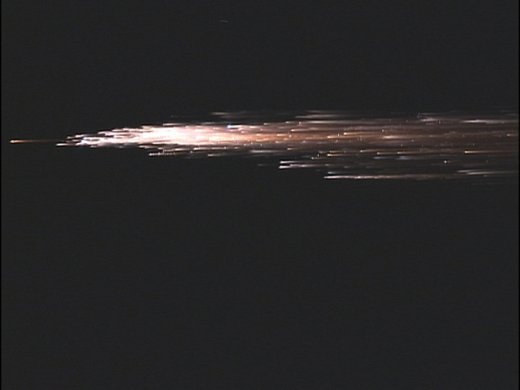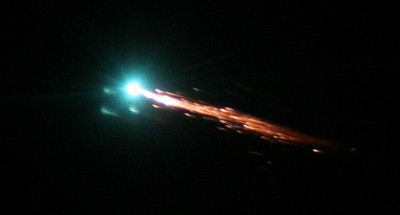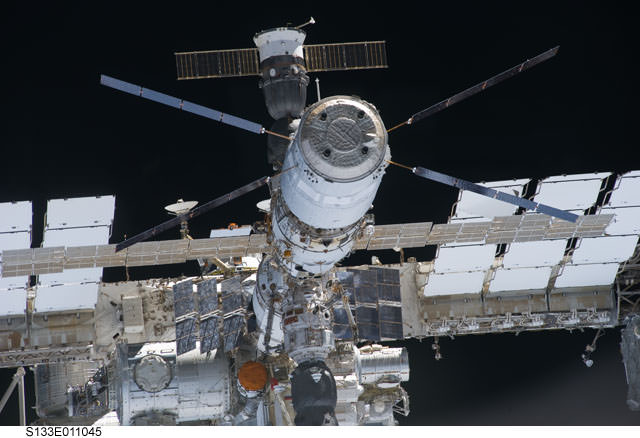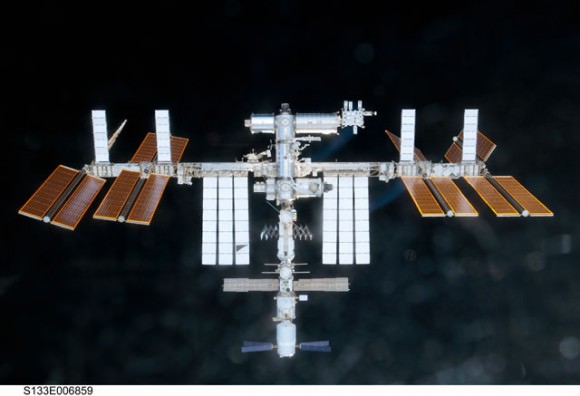[/caption]
The Johannes Kepler ATV (Automated Transfer Vehicle) has undocked from the International Space station and will re- enter Earth’s atmosphere on June 21st ending its mission in fiery destruction.
The ATV has been docked with the ISS since February, where it delivered supplies, acted as a giant waste disposal and boosted the orbit of the International Space Station with its engines.
The X-wing ATV delivered approximately 7 tonnes of supplies to the station and will be leaving with 1,200kg of waste bags, including unwanted hardware.
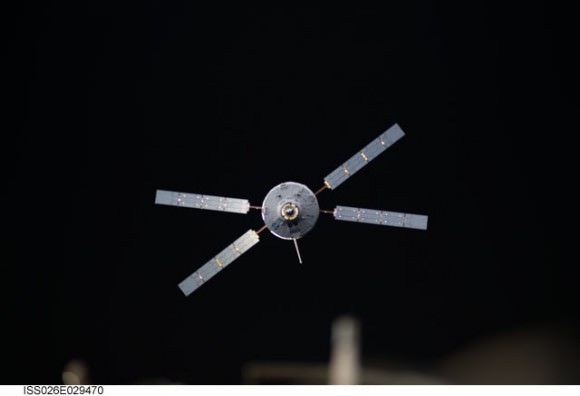
On June 21st at 17:07 GMT the craft will fire its engines and begin its suicide mission, tumbling and burning up as a bright manmade fireball over the Pacific Ocean. Any leftover debris will strike the surface of the Pacific ocean at 20:50 GMT.
During the ATV’s re-entry and destruction there will be a prototype onboard flight recorder (Black Box) transmitting data to Iridium satellites, as some aspects of a controlled destructive entry are still not well known.
ESA says that this area is used for controlled reentries of spacecraft because it is uninhabited and outside shipping lanes and airplane routes. Extensive analysis by ESA specialists will ensure that the trajectory stays within safe limits.
There still are some chances to see the ISS and Johannes Kepler ATV passing over tonight, but if you in a location where you can see the south Pacific skies starting at about 20:00 GMT, keep an eye out for a glorious manmade fireball.
